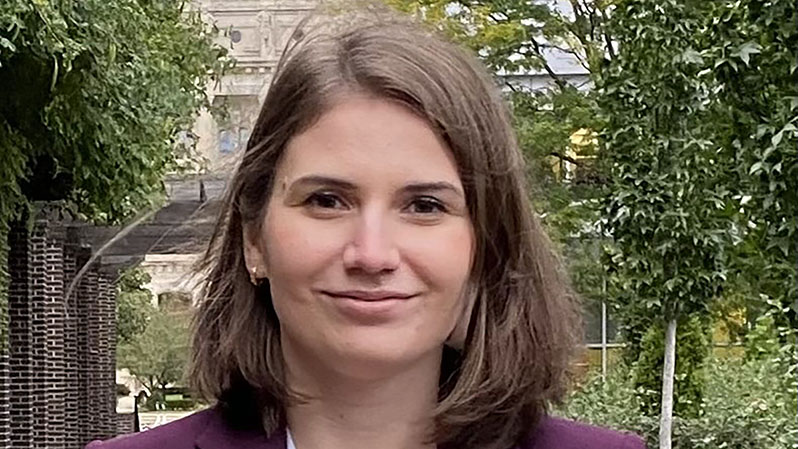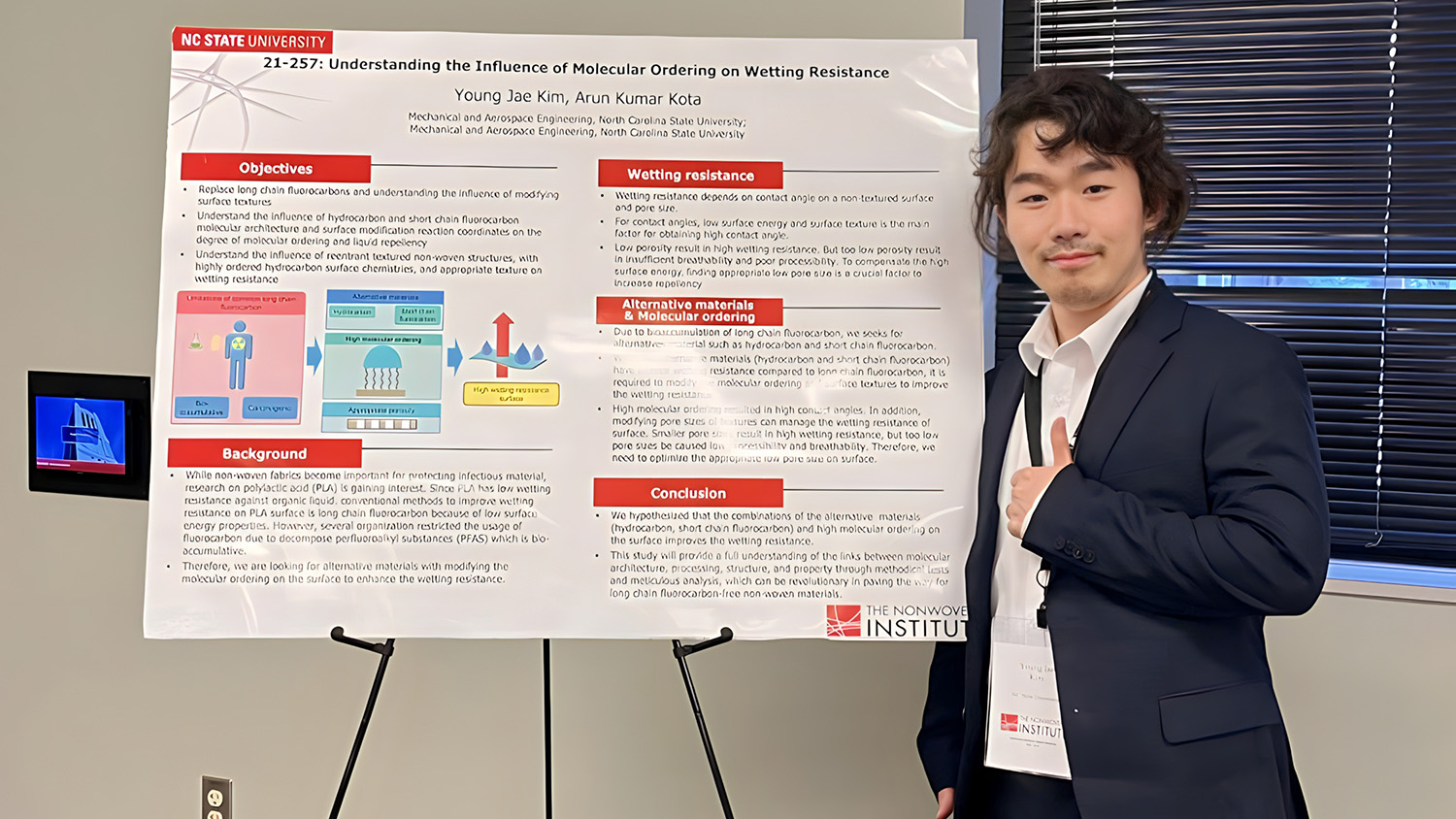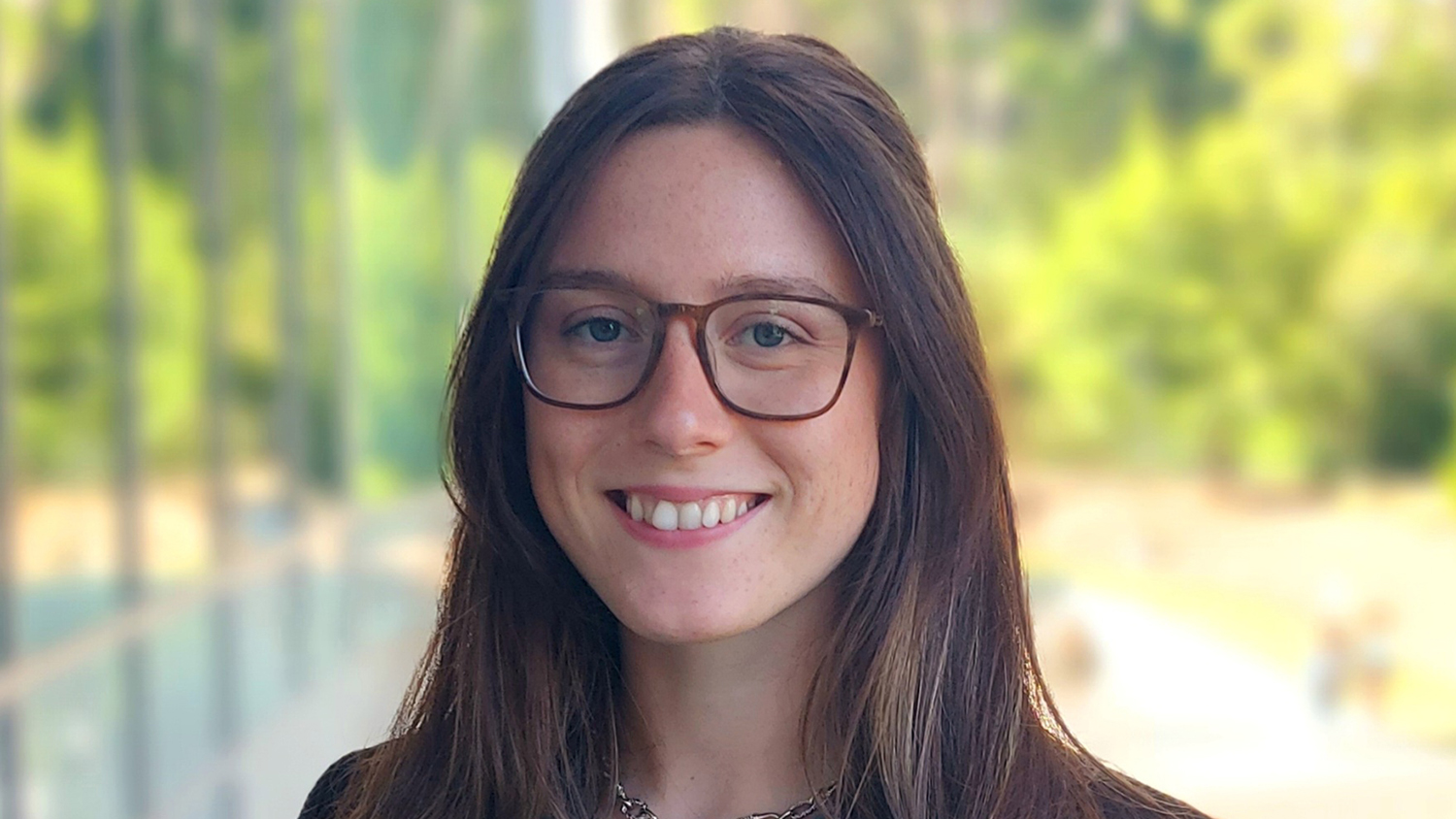Anicah Smith O’Brien, Effect of Surface Coatings on Biodegradability and Functional Properties of Biopolymers
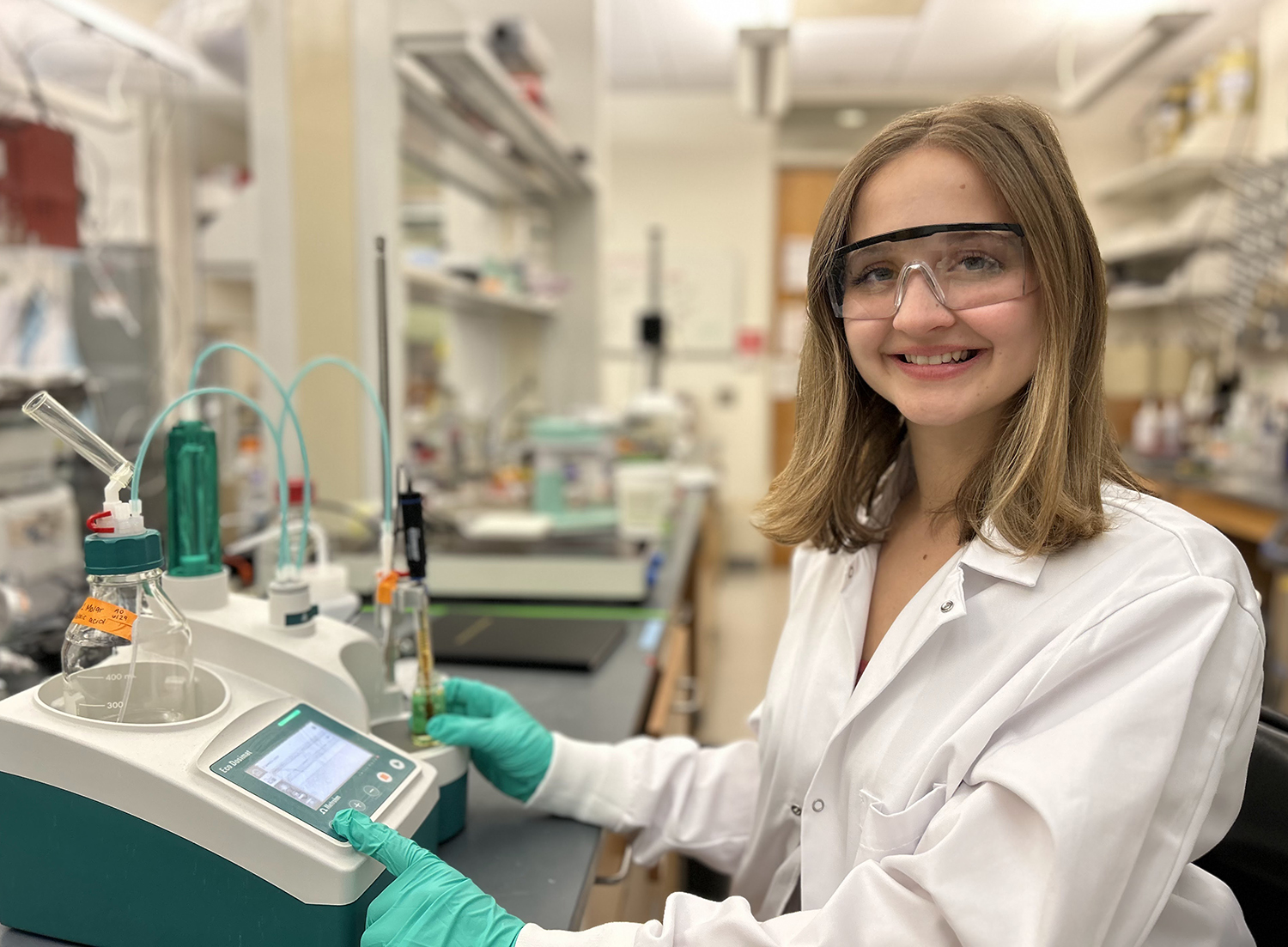
Anicah Smith O’Brien
Degree Type: Ph.D.
Expected Graduation Date: 2027
School/Department: NC State University, Department of Chemical and Biomolecular Engineering
Program/Focus: Chemical Engineering
Research Project: Effect of Surface Coatings on Biodegradability and Functional Properties of Model Pure and Blended Biopolymer Substrates
Professor/Faculty Advisors: Saad Khan, Ph.D., NC State University; Morton Barlaz, Ph.D., NC State University
How did you come to have an interest in nonwovens?
I participated in undergraduate research on polyfluoroalkyl substances (PFAS) remediation from water using polymers. This project sparked my interest in both materials development and environmental protection. Upon learning about the vast opportunities within the nonwovens sector to work on sustainable materials, I became interested in nonwovens specifically. Learning about nonwovens production processes and different nonwoven products during my first semester has only heightened my enthusiasm for the field and my commitment to promote sustainability. I eagerly anticipate expanding my knowledge of the industry during my time with The Nonwovens Institute.
Why are your research/findings particularly important/compelling for nonwovens applications?
My research focuses on studying the impact of surface coatings and blending on the biodegradability of polymer substrates. Surface coatings are commonly applied to nonwoven products to modify their physical properties, such as hydrophilicity, which is particularly important for personal hygiene products. The nonwovens industry has a keen interest in utilizing biodegradable materials. However, achieving desired physical properties often requires blending different bio-based polymers. Despite this, there is a lack of fundamental understanding regarding how these factors influence biodegradability. This project aims to bridge this knowledge gap by systematically evaluating the mechanisms behind the biodegradability of specific polymer blends and coatings.

Alongside investigating the impact of these factors on biodegradability, I will also explore the interactions between surface coatings and bio-based polymers. Reports suggest that surface coatings are not adsorbed at the end-of-life of a product and are washed away after exposure to liquids. Therefore, we will examine the adsorption duration of various coatings and correlate these findings with biodegradation tests.
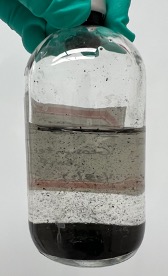
The fundamental knowledge gained from this project will have significant implications for the development of diverse biodegradable nonwovens with different functionalities.
Learn more about Anicah’s NWI research project in the following video short:
Where do you see yourself upon completion of your studies?
During graduate school, I intend to pursue an internship that aligns with my research focus on biodegradable polymers and allows me to lead an environmental research project. This internship will provide a valuable opportunity for me to expand my knowledge in materials development while gaining insights into industrial safety culture. Additionally, I aim to present my research findings at national conferences during my studies, further enhancing my professional development. Upon completion of my Ph.D., my career aspirations involve working in an industrial research and development role. In this position, I aim to actively contribute to sustainability initiatives within the company, utilizing my expertise in materials development and environmental research. I am also eager to take on a mentoring role, guiding and inspiring young scientists in their professional growth. Furthermore, I envision myself working in an interdisciplinary capacity, collaborating with professionals from various sectors of the industry. By engaging with individuals across different disciplines, I hope to broaden my understanding of the field and foster a culture of continuous learning and innovation.
When you are not studying and doing your nonwovens research project, what are your personal interests, hobbies … any activities you would like to highlight?
When not working in the lab, I enjoy playing recreational tennis or doing yoga with friends. I am also an avid animal lover and love to spend time with my cat, Pancake. I am a volunteer at the SPCA of Wake County and find great joy in helping care for the animals.
- Categories:
